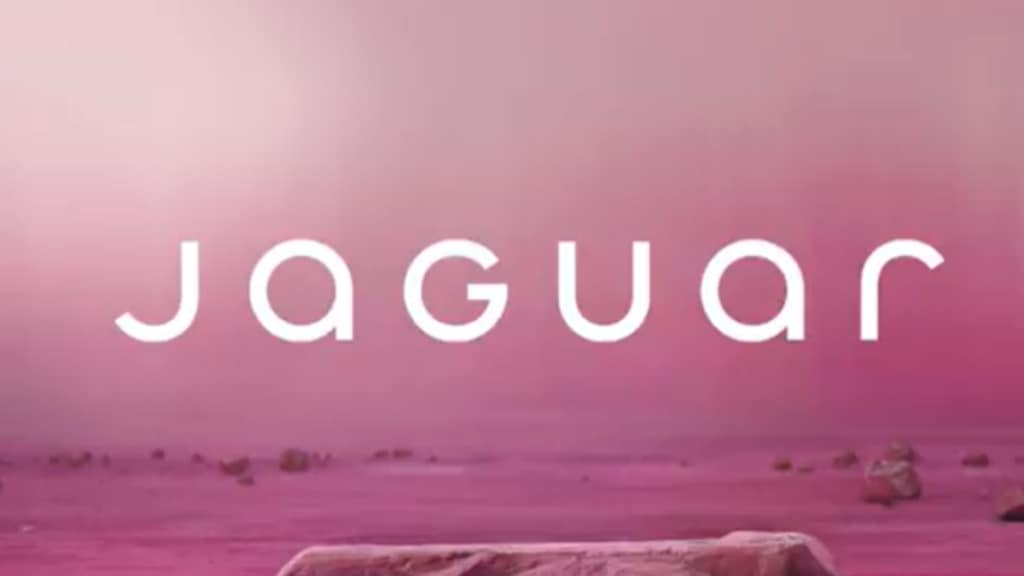For decades, Jaguar stood for a blend of British engineering, performance, and luxury, an identity that helped the brand build loyalty among customers who valued refinement and heritage. But in its attempt to reinvent itself for a new era, Jaguar now finds itself facing one of the most severe sales declines seen in the European automotive market. In April 2025, the company registered just 49 vehicles in Europe, a 97.5% drop from 1,961 units sold during the same month the previous year.

At the centre of this dramatic slide is a rebranding strategy that, analysts say, misread both the market and Jaguar’s own strengths. The brand’s new identity, launched in November 2024, was meant to signal a bold pivot towards electrification and a new customer base. Instead, it left many long-time buyers alienated and failed to connect with the new audience it was hoping to attract.
A break from the familiar
Jaguar’s rebranding was striking in its departure from the familiar cues that had defined the brand for decades. The iconic leaping jaguar logo was dropped in favour of a minimalist nameplate. The advertising campaign showcased bright, abstract visuals and models in stylised, conceptual settings. Slogans like “Copy Nothing” and “Delete Ordinary” replaced references to cars, performance, or engineering. In fact, the advertisements featured no vehicles at all.
This change was designed to appeal to a younger, urban, design-driven demographic. Jaguar’s leadership spoke openly about the need to move beyond the brand’s traditional customer base, often described as affluent and older buyers who valued Jaguar as a symbol of success. But in its effort to reach new customers, the brand overlooked the expectations of its core audience.
“Jaguar’s transformation towards a new portfolio of pure-electric vehicles was announced as part of the Reimagine strategy in 2021. JLR always envisaged a period when the current range would ‘not be on sale’ before the introduction of the new Jaguar collection. Production of XE, XF, F-TYPE, I-PACE and E-PACE all came to an end in 2024 as part of that transition. This strategic ‘sunset’ of the product range is going to plan and will allow Jaguar to transform and reposition the brand for the future. Comparing Jaguar sales to 2024 is pointless, as we are no longer producing vehicles in 2025 with low levels of retail inventory available. Jaguar’s rebranding is not related to a sales decline,” JLR spokesperson told financialexpress.com
The reaction
The campaign drew swift criticism. On social media, confusion over Jaguar’s messaging spread quickly. Tesla CEO Elon Musk’s post, “Do you sell cars?”, captured the mood, going viral and reflecting the broader uncertainty about Jaguar’s direction.
Industry observers pointed out that the marketing failed to communicate what the brand was offering and why consumers should care. Without cars in the advertisements, and with the familiar identity stripped away, the campaign struggled to create a link between Jaguar’s new image and the product.
A product gap at the worst time
The challenges did not end with marketing. Jaguar’s rebrand coincided with a major change in its product line-up. The company discontinued nearly all of its existing models, including the XE, XF, F-Type, E-Pace, and I-Pace, before its new range of electric vehicles was ready. The next generation of Jaguar cars, including the much-anticipated Type 00, is not expected until 2026.
This left dealerships across Europe with very few vehicles to offer at a time when competitors like BMW, Mercedes-Benz, and Audi continued to report strong sales. Jaguar’s decision to pull back on product availability during a major brand transition added to customer frustration and left the company unable to convert interest into sales. Till the time of publishing, Jaguar has not issued a statement in response.
Lessons for brands
Jaguar’s experience offers important lessons for marketers and brand strategists. First, while rebranding can help a company stay relevant, it is most successful when it builds on existing strengths rather than abandoning them. Brands like Porsche have transitioned towards electrification while keeping their core identity intact, ensuring that loyal customers remain engaged even as the brand evolves.
Second, any change in messaging needs to align with what is available in the market. Jaguar’s new campaign launched at a time when the company had little to sell, creating a disconnect between promise and reality. Without products to back up the new image, customers and dealers alike were left uncertain about the brand’s future.
Finally, it underscores the risk of trying to move too far, too fast. While Jaguar aimed to capture a new, younger audience, the speed and scale of change came at the cost of the trust it had built over decades. The brand now faces the challenge of rebuilding that trust while preparing to launch its new line-up.
Jaguar Land Rover has lowered its profit expectations in light of the collapse and is dealing with significant revenue losses. Whether the brand can regain lost ground will depend on how well its future electric models perform and whether it can reconnect with both old and new customers.
